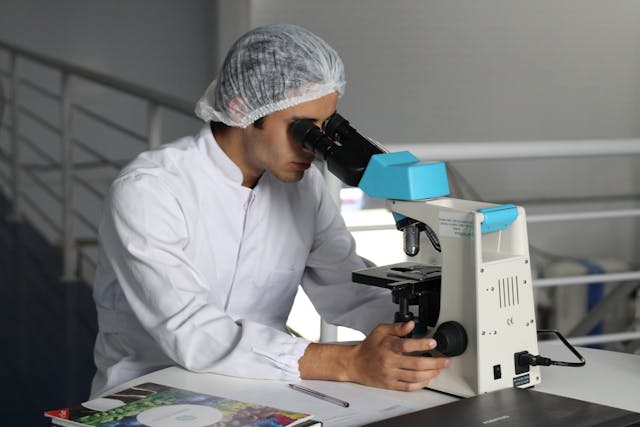Persistent Genital Arousal Disorder (PGAD), also known as Persistent Sexual Arousal Syndrome (PSAS), is a rare and often misunderstood condition that causes constant arousal and multiple orgasms in affected individuals. While it may seem like a desirable condition, it is actually a source of significant distress for those who suffer from it. The condition can have a profound impact on a person’s quality of life, relationships, and mental health.
This article aims to raise awareness about PGAD, explore its causes and symptoms, discuss treatment options, and provide information on support available for those affected by this condition.
What is PGAD?
PGAD is a neurological condition characterized by persistent genital arousal, which is not related to sexual desire or activity. It is estimated that only 1 in 10,000 women are affected by PGAD, making it a rare condition. The exact cause of PGAD is unknown, but it is believed to be related to dysfunction in the nervous system, particularly the pudendal nerve.
Causes of PGAD
The exact cause of PGAD is not fully understood, but it is believed to be related to dysfunction in the nervous system, particularly the pudendal nerve. The pudendal nerve is responsible for transmitting sensory and motor information from the genital area to the brain.
Some potential causes of PGAD include:
1. Nerve damage: Injury to the pudendal nerve or other nerves in the pelvic region may contribute to PGAD.
2. Hormonal imbalances: Hormonal fluctuations, such as those experienced during menopause, may play a role in the development of PGAD.
3. Medications: Certain medications, including antidepressants and blood pressure medications, have been linked to the development of PGAD.
4. Chronic pelvic pain: Individuals with chronic pelvic pain may be more susceptible to developing PGAD.
Symptoms of PGAD
The primary symptom of PGAD is persistent genital arousal, which is not related to sexual desire or activity. Affected individuals may experience:
1. Constant arousal: This can be experienced as a feeling of wetness, tingling, or throbbing in the genital area.
2. Multiple, involuntary orgasms: These orgasms are often painful and not associated with sexual activity or desire.
3. Discomfort or pain: The constant arousal and involuntary orgasms can cause significant discomfort or pain in the affected individuals.
Treatment Options for PGAD
Treatment for PGAD is often a complex process, as the condition is not well understood and there is no one-size-fits-all approach. Treatment options may include:
1. Medication: Antidepressants, anticonvulsants, and alpha-blockers are sometimes prescribed to help manage the symptoms of PGAD.
2. Pelvic floor therapy: Physical therapy to strengthen the pelvic floor muscles may help alleviate some of the symptoms of PGAD.
3. Nerve blocks: In some cases, nerve blocks may be used to temporarily relieve symptoms.
4. Pain management: If PGAD is causing significant pain, pain management strategies such as medication or nerve blocks may be necessary.
5. Counseling: Psychological support, such as counseling or therapy, can help individuals cope with the emotional impact of PGAD.
Support for Individuals with PGAD
Living with PGAD can be isolating and distressing, but there are resources available to help individuals cope with the condition. Support may include:
1. Support groups: Joining a support group for individuals with PGAD can provide a safe space to share experiences, learn from others, and receive emotional support.
2. Online forums: Online forums, such as those found on Reddit or other platforms, can provide a space for individuals with PGAD to connect with others who are experiencing similar symptoms.
3. Medical professionals: Finding a knowledgeable medical professional who is experienced in treating PGAD can be crucial in managing the condition.
FAQ About PGAD
Persistent Genital Arousal Disorder (PGAD) is a complex and often misunderstood condition. To provide a comprehensive understanding, here are answers to some of the most frequently searched questions about PGAD:
1. What does PGAD feel like?
Individuals with PGAD experience persistent and unprovoked sensations of genital arousal, which can include:
- Tingling or throbbing in the genital area
- Feelings of pressure or fullness
- Spontaneous orgasms that do not alleviate the arousal
These sensations occur without sexual desire and can last for extended periods, causing significant distress and discomfort.
2. Is PGAD a psychological or physical condition?
PGAD is primarily considered a physical condition, potentially linked to neurological, vascular, or pharmacological factors. However, the chronic symptoms often lead to psychological challenges, including anxiety, depression, and stress. Effective treatment typically involves addressing both the physical and emotional aspects of the disorder.
3. How is PGAD diagnosed?
Diagnosing PGAD involves a comprehensive evaluation, including:
- Detailed medical and sexual history
- Physical examination
- Assessment of symptoms against established diagnostic criteria
Healthcare providers aim to rule out other conditions and identify any underlying causes contributing to the symptoms.
4. What are the treatment options for PGAD?
Treatment for PGAD is individualized and may include:
- Medication: Antidepressants, anticonvulsants, or other medications to manage symptoms
- Pelvic floor physical therapy: Techniques to alleviate muscle tension and improve pelvic function
- Psychotherapy: Cognitive-behavioral therapy (CBT) to address the emotional impact
- Lifestyle modifications: Stress management and avoidance of triggers
A multidisciplinary approach often yields the best outcomes.
5. Can men experience PGAD?
Yes, while PGAD has been predominantly reported in women, men can also experience this condition. In men, symptoms may include persistent penile arousal, discomfort, and spontaneous orgasms without sexual desire.
6. Is there a cure for PGAD?
Currently, there is no definitive cure for PGAD. However, various treatments can help manage and alleviate symptoms. Ongoing research aims to better understand the condition and develop more effective interventions.
7. How does PGAD affect daily life?
PGAD can significantly impact daily activities, leading to:
- Difficulty concentrating
- Emotional distress
- Challenges in personal relationships
- Avoidance of social situations due to fear of symptoms
The intrusive nature of the symptoms often necessitates adjustments in lifestyle and routines.
8. Are there support resources for individuals with PGAD?
Yes, individuals with PGAD can seek support through:
- Support groups: Connecting with others facing similar challenges
- Online forums: Platforms for sharing experiences and advice
- Healthcare professionals: Specialists in sexual health, neurology, and psychology
Accessing these resources can provide emotional support and practical strategies for managing the condition.
Understanding PGAD is crucial for those affected and their support networks. If you or someone you know is experiencing symptoms of PGAD, consulting a healthcare professional is an essential step toward effective management and improved quality of life.
Persistent Genital Arousal Disorder is a rare and often misunderstood condition that can have a significant impact on an individual’s quality of life. By understanding the causes, symptoms, and treatment options for PGAD, and seeking support from others who are experiencing similar symptoms, individuals with PGAD can better manage their condition and improve their overall well-being.



Pingback: Unforeseen Diagnosis: A Woman's Journey from Unexplained Flu-Like Symptoms to Shocking Terminal Illness - Wellness Readers Digest
Pingback: Utah Senate Passes Bill to Eliminate Fluoride in Public Drinking Water, Following RFK Jr.'s Criticism of 'Industrial Waste' Cavity Fighter - Wellness Readers Digest
Pingback: Fact or Myth: Can a Single Sneeze Cause a Stroke? - Wellness Readers Digest